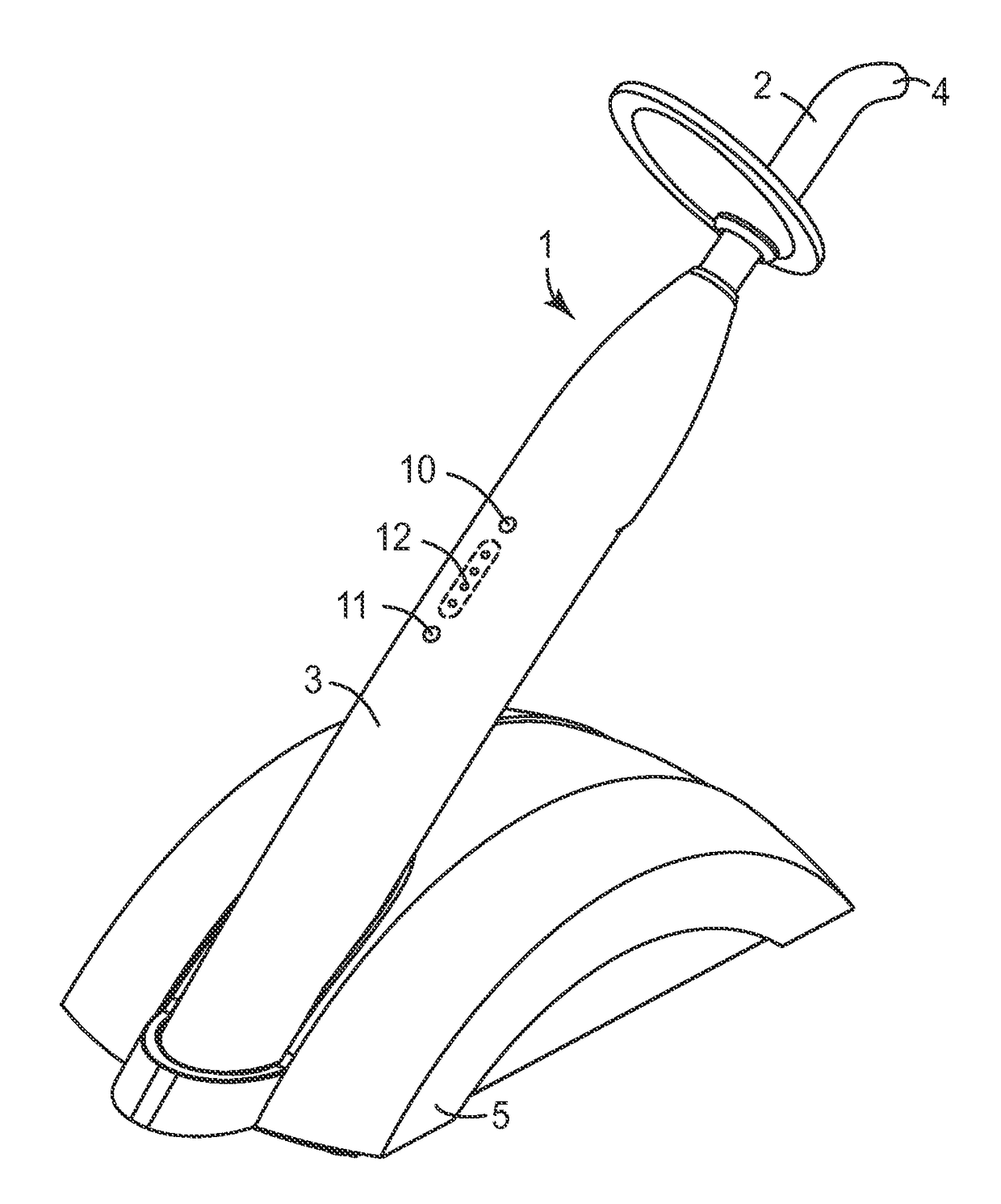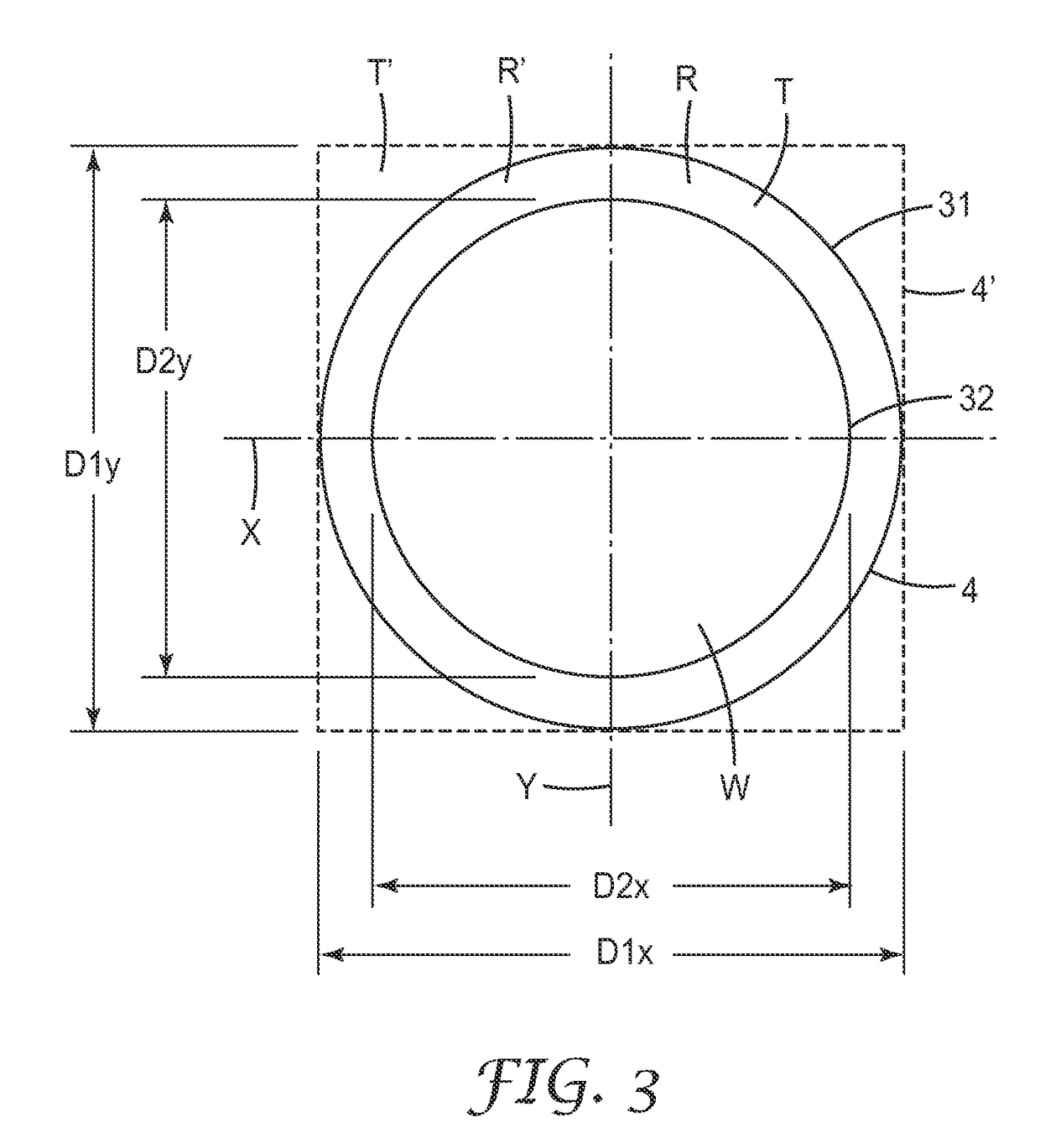A dental light irradiation device
a light irradiation device and dental technology, applied in the field of dental light irradiation devices, can solve the problems of insufficient hardening of dental materials, insufficient durability of dental fillings, and each of the different parts of dental materials to be exposed to light for a shorter time, so as to maximize the amount of light transmittable through the lens, excellent balance, and high light intensity
- Summary
- Abstract
- Description
- Claims
- Application Information
AI Technical Summary
Benefits of technology
Problems solved by technology
Method used
Image
Examples
Embodiment Construction
[0043]FIG. 1 shows an exemplary dental light irradiation device 1. The device 1 has a housing 3, and a light guide 2 with a light output 4. The dental light irradiation device 1 of the example is removably placed in a base 5. The device 1 is battery powered and therefore separable from the base 5 without the need of a permanent wired connection between the device 1 and the base 5. The base 5 has a power supply for charging the device 1 when the device is placed in the base 5. Such a power supply may comprise physical electric contacts for contacting corresponding contacts of the device 1, or an induction coupling for coupling with a corresponding induction coupling in the device 1. The exemplary dental light irradiation device 1 further has two buttons, an on / off button 10 and a selector button 11. The selector button 11 is typically used to pre-select a time period for which the device operates as soon as it is switched on via the on / off button 10. Therefore the device 1 can be use...
PUM
 Login to View More
Login to View More Abstract
Description
Claims
Application Information
 Login to View More
Login to View More - R&D
- Intellectual Property
- Life Sciences
- Materials
- Tech Scout
- Unparalleled Data Quality
- Higher Quality Content
- 60% Fewer Hallucinations
Browse by: Latest US Patents, China's latest patents, Technical Efficacy Thesaurus, Application Domain, Technology Topic, Popular Technical Reports.
© 2025 PatSnap. All rights reserved.Legal|Privacy policy|Modern Slavery Act Transparency Statement|Sitemap|About US| Contact US: help@patsnap.com



